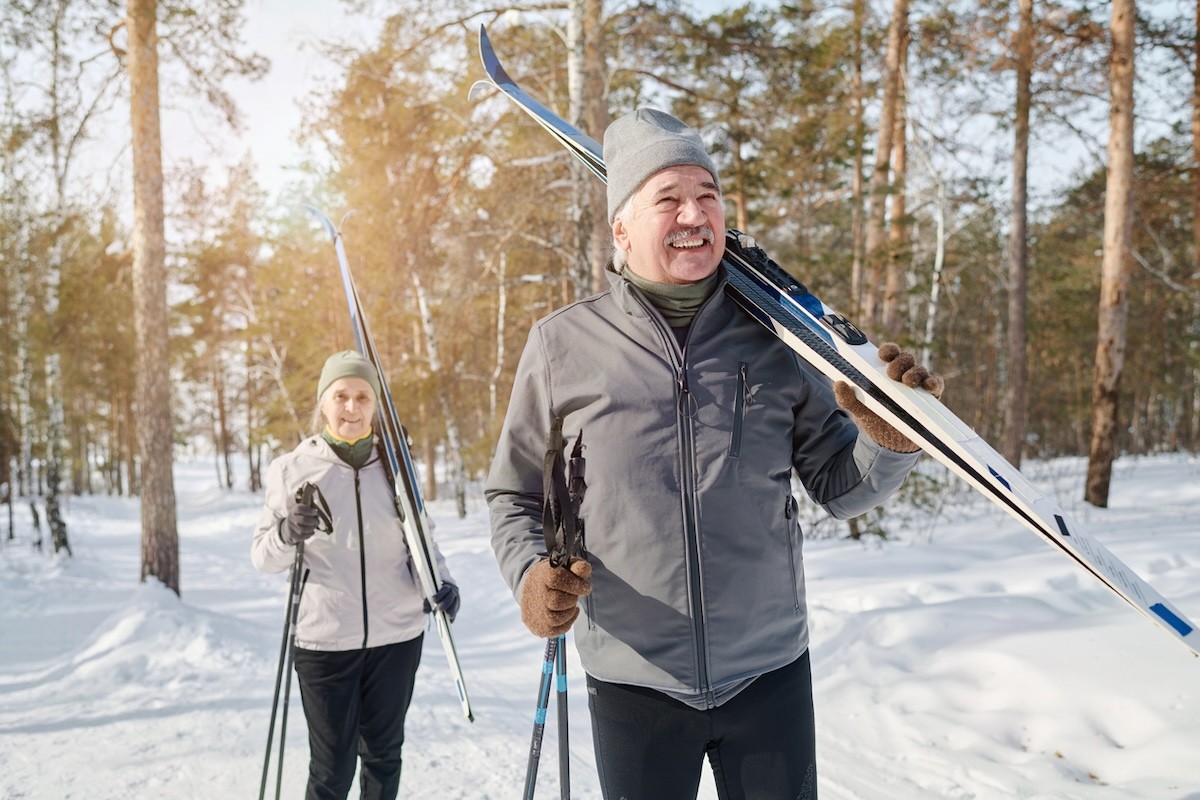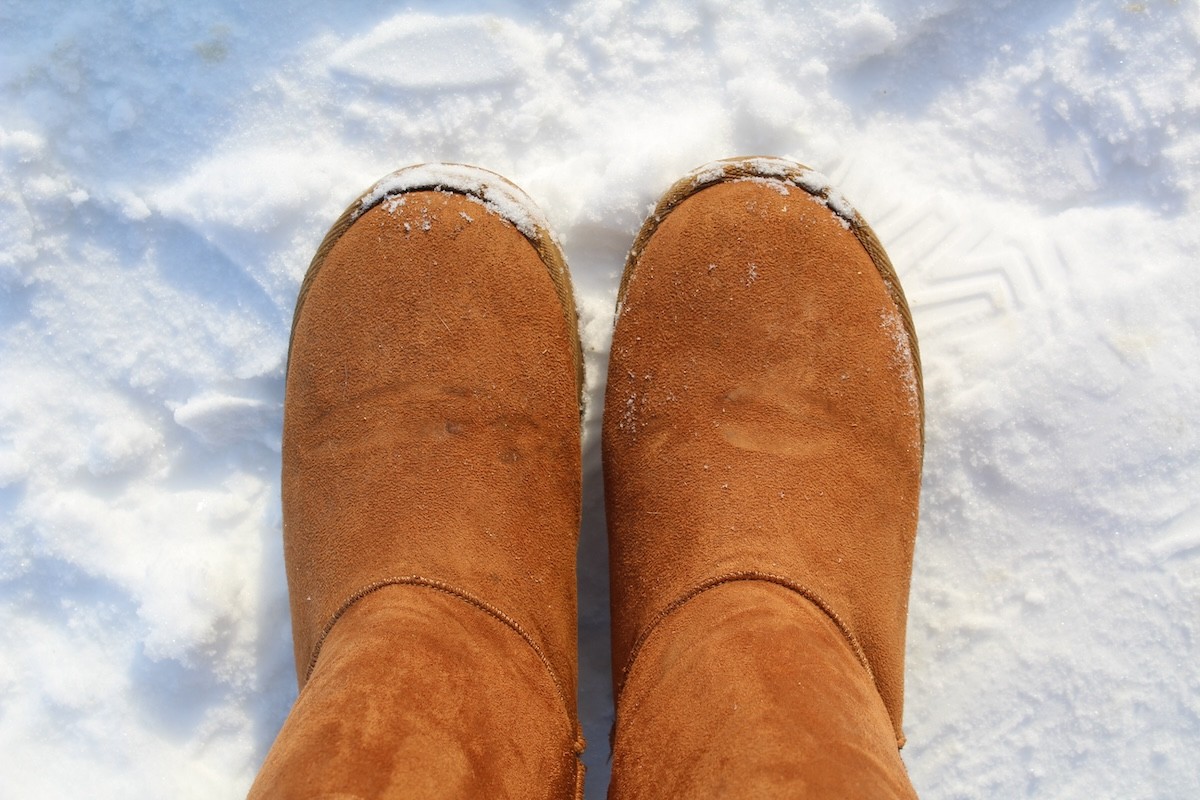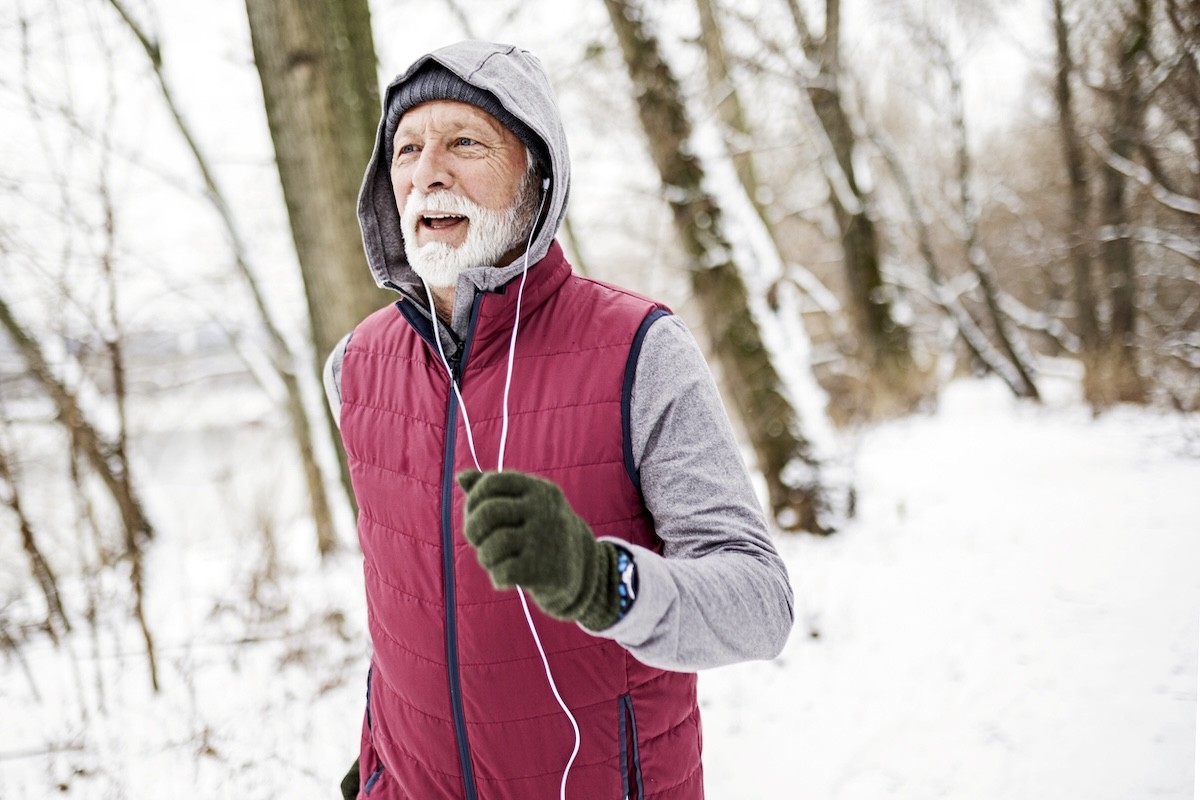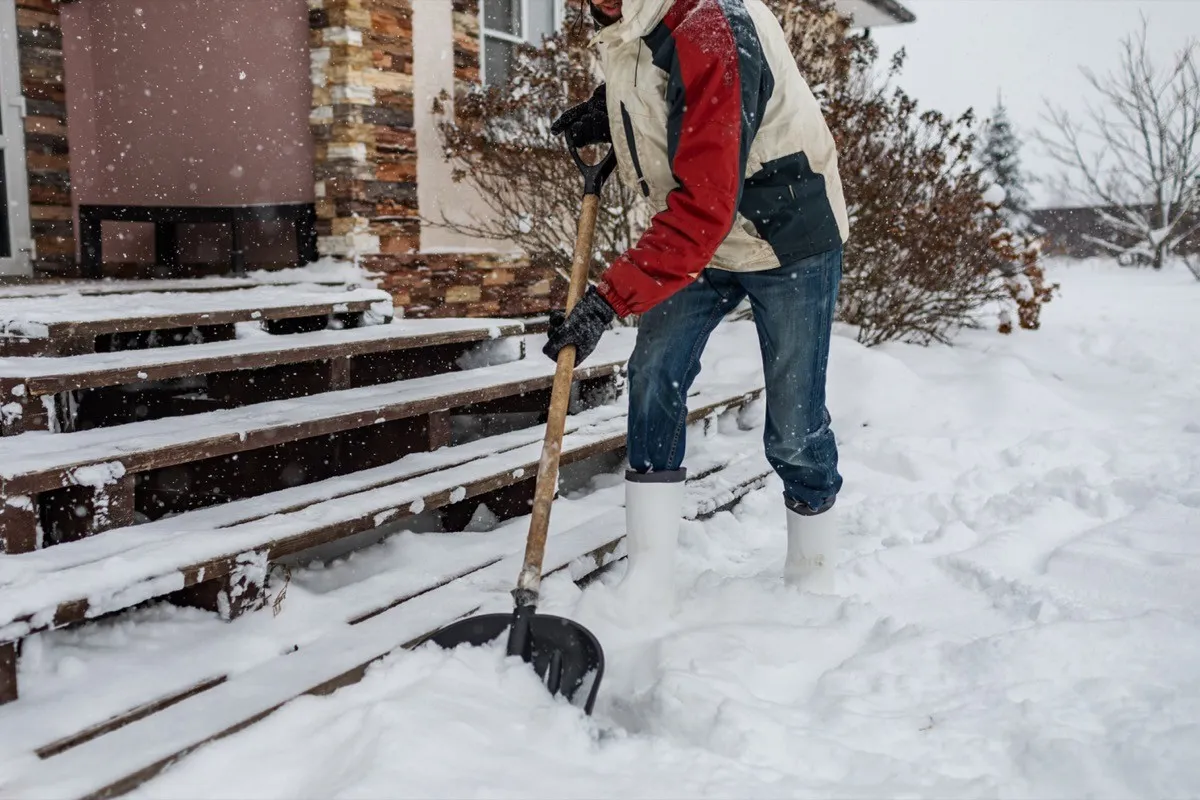If You’re Over 65, Don’t Wear These 7 Clothing Items When It Snows

Deciding what to wear can be a tough proposition—even when the weather is cooperating. Throw in a wintry mix of snow and slush, and you may find your wardrobe choices even more overwhelming. Adults over the age of 65 should be especially thoughtful when it comes to winter dressing.
“With snow, ice, and freezing temperatures, winter weather can pose a serious health hazard to seniors,” Sarah Arfeen, chief editor of Senior Care Corner, tells Best Life.
However, she notes that seniors should keep up with their activities throughout the year and also enjoy the winter season. With that said, we spoke to Arfeen and other experts to find out which seven clothing items those over 65 should avoid when it snows.
RELATED: If You’re Over 65, Don’t Wear These 7 Clothing Items on a Walk.
1
Cotton clothing items

When the temperatures drop—and especially if it’s wet outside from snow or sleet—it’s a good idea to layer with wool, fleece, or insulating fabrics. However, cotton may do more harm than good.
“Cotton is a natural fiber, but when wet, it loses its insulating properties. In cold weather, if cotton clothing becomes wet from snow, rain, or sweat, it can quickly draw heat away from the body, leading to discomfort and an increased risk of hypothermia,” Arfeen says.
This applies not only to your clothing items but socks, too.
2
Shearling boots

Cozy, shearling boots, such as the popular Ugg boots, seem like they’d be made for snow. They’re super warm, and you’ve probably seen plenty of advertisements for sprays that claim to make your suede boots waterproof.
But this is a common misconception, as even Ugg itself notes that any waterproofing is only meant to “handle surprise drizzles and life’s little spills.” They add that, for most of their classic boots, “water can seep in through the seams.”
More often than not, these types of boots offer no traction and leave you vulnerable to slipping—so avoid them even if there’s a slight possibility of ice on the ground.
Moreover, “Whether they are real Uggs or fake Uggs, we’re dealing with footwear that offers no substantial and necessary orthopedic support for the foot and the ankle,” explained Rock Positano, MD, director of the Non-surgical Foot and Ankle Service for the Hospital for Special Surgery, in a former Daily Mail article.
“Whether you have a high arch, or a flat arch, inherently there are issues. You have the support issue under the foot, and the fact that there’s no support around the ankle joint or the Achilles tendon,” he added.
RELATED: If You’re Over 65, Don’t Wear These 5 Clothing Items to Sleep.
3
Tight clothing

Layering your clothing can take a slightly snug item and make it downright constrictive. That’s why Arfeen recommends opting for looser layers, which will add insulation without causing discomfort or limiting your mobility.
“Tight clothing can restrict blood circulation, particularly to the extremities,” she says. “In snowy weather, proper blood circulation is crucial for maintaining warmth in the hands, feet, and other areas. Impaired circulation increases the risk of frostbite and discomfort.”
As the National Institute on Aging (NIA) notes, warm, loose layers are preferable: “The air between the layers helps to keep you warm.”
4
Denim

If you wear denim daily, you may want to make snow days the exception to the rule.
“Denim is a thick and heavy fabric which we often believe will offer protection, but it can become stiff and uncomfortable when wet. It also absorbs moisture, making it a poor choice for snowy conditions where staying dry is essential for maintaining warmth,” Arfeen says.
5
Metal jewelry

Your jewelry can also impact your comfort and well-being.
“Metal has high thermal conductivity, meaning it can quickly become very cold when exposed to low temperatures,” Arfeen explains. “If seniors wear metal jewelry outdoors in snow, it can make their skin colder and increase the risk of discomfort, especially in extremities like fingers or ears.”
RELATED: If You’re Over 65, Don’t Wear These 5 Shoes, Podiatrists Warn.
6
The wrong jacket

“Wear a waterproof coat or jacket if it’s snowy or rainy,” says the NIA. But there’s still more to consider.
Senior Helpers, a caregiving provider in Illinois, advises choosing a jacket that goes at least to your knees.
They recommend the following warm-weather materials: goose or duck down filled, faux fur, fleece, or wool. However, they say “wool or wool-blended fabric is the warmest option and is naturally water-resistant.”
7
Worn-out winter accessories

Finally, it’s essential to wear well-maintained winter accessories in snow and frigid temperatures. Arfeen warns that regular wear and tear can often create gaps or openings in the fabric of scarves, hats, and gloves, allowing cold air to penetrate and body heat to escape.
“To ensure optimal comfort and protection in snowy conditions, seniors should regularly inspect their winter accessories for signs of wear and tear,” Arfeen says. “Over time, these items can lose their ability to retain heat effectively, exposing seniors to the risk of feeling cold and uncomfortable out in the snow.”
To keep even warmer, the NIA suggests “using disposable or rechargeable hand- and foot-warming products.”
And if anything you’re wearing happens to get wet while you’re outside, change out of those damp clothes immediately.